-
 Bitcoin
Bitcoin $88,575.4133
1.33% -
 Ethereum
Ethereum $1,623.1195
-0.94% -
 Tether USDt
Tether USDt $1.0000
0.01% -
 XRP
XRP $2.1040
-0.96% -
 BNB
BNB $605.9509
0.36% -
 Solana
Solana $139.9862
-0.01% -
 USDC
USDC $1.0000
0.00% -
 Dogecoin
Dogecoin $0.1637
1.09% -
 TRON
TRON $0.2482
1.98% -
 Cardano
Cardano $0.6392
-1.18% -
 Chainlink
Chainlink $13.3059
-1.43% -
 UNUS SED LEO
UNUS SED LEO $9.0739
-4.00% -
 Avalanche
Avalanche $20.1274
-2.31% -
 Stellar
Stellar $0.2484
-4.08% -
 Sui
Sui $2.3116
2.05% -
 Shiba Inu
Shiba Inu $0.0...01252
-0.73% -
 Toncoin
Toncoin $2.9119
-3.20% -
 Hedera
Hedera $0.1725
0.04% -
 Bitcoin Cash
Bitcoin Cash $346.0750
1.19% -
 Hyperliquid
Hyperliquid $18.2428
0.88% -
 Litecoin
Litecoin $79.3117
-2.01% -
 Polkadot
Polkadot $3.7471
-4.36% -
 Dai
Dai $1.0000
0.00% -
 Bitget Token
Bitget Token $4.4341
-0.56% -
 Ethena USDe
Ethena USDe $0.9992
0.00% -
 Pi
Pi $0.6353
0.33% -
 Monero
Monero $216.8188
0.48% -
 Pepe
Pepe $0.0...08105
3.48% -
 Uniswap
Uniswap $5.3764
-1.05% -
 OKB
OKB $51.0901
0.18%
What are the main differences between NFT and cryptocurrency?
NFTs are non-fungible, representing unique digital assets with value beyond monetary worth, unlike fungible cryptocurrencies which serve primarily as mediums of exchange.
Feb 28, 2025 at 09:49 am
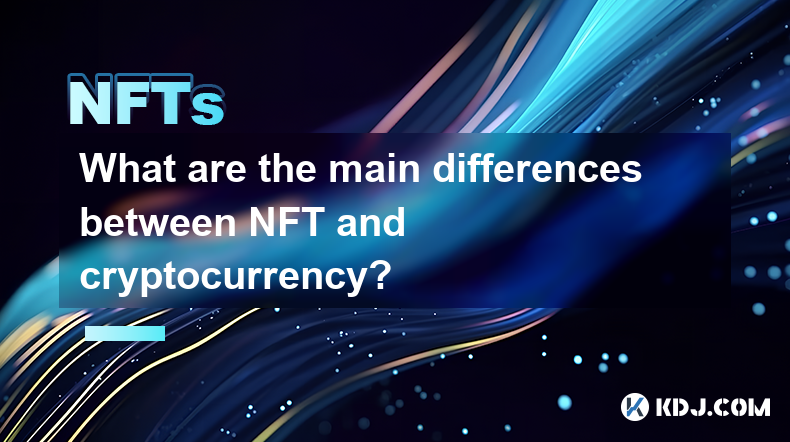
What are the main differences between NFT and cryptocurrency?
Key Points:
- Fungibility: Cryptocurrencies are fungible (interchangeable), while NFTs are non-fungible (unique). This is the core distinction.
- Utility and Value Proposition: Cryptocurrencies primarily serve as a medium of exchange or store of value, while NFTs represent ownership of a unique digital or physical asset. Their value is derived from factors beyond their inherent monetary worth.
- Technology: Both utilize blockchain technology, but their implementations differ significantly, impacting their functionality and use cases.
- Trading and Marketplaces: Cryptocurrencies are traded on exchanges focused on price fluctuations, while NFTs are traded on marketplaces emphasizing asset uniqueness and provenance.
- Scarcity: While both can be scarce, the scarcity of cryptocurrencies is determined by their total supply and issuance schedule, whereas NFT scarcity is determined by the single instance of a particular asset.
1. Fungibility: The Core Distinction
The most fundamental difference between NFTs and cryptocurrencies lies in their fungibility. A cryptocurrency, like Bitcoin or Ethereum, is fungible. This means that one Bitcoin is essentially identical to any other Bitcoin. You can exchange one Bitcoin for another, and it doesn't matter which specific Bitcoin you receive; they are all equivalent in value and functionality. This interchangeability is crucial for cryptocurrencies to function as a medium of exchange. Imagine trying to use a currency where each unit had unique characteristics and varying values; transactions would become incredibly complex and impractical.
NFTs, on the other hand, are explicitly non-fungible. Each NFT is unique and cannot be substituted for another. Think of it like a one-of-a-kind piece of art, a collectible trading card, or a unique digital item. Just like two identical paintings by the same artist might have different values depending on their condition or provenance, two NFTs representing the same underlying digital asset can have different values based on various factors including the owner’s history, the rarity of the NFT itself, and the perceived value within the community. This uniqueness is the very essence of what makes an NFT an NFT. The inherent non-fungibility dictates how NFTs are traded and valued, fundamentally separating them from cryptocurrencies. The concept of interchangeability simply doesn't apply. This distinction is crucial to understanding their different roles within the cryptocurrency ecosystem. The fungibility of cryptocurrencies allows for seamless transactions and the establishment of a liquid market, while the non-fungibility of NFTs creates a market for unique digital assets with potentially varying values based on factors beyond their inherent code. This difference shapes their respective uses and impacts their overall market dynamics.
2. Utility and Value Proposition: Beyond Monetary Worth
Cryptocurrencies primarily derive their value from their utility as a medium of exchange, a store of value, or a unit of account. Their value is largely determined by market forces – supply and demand, adoption rate, and overall market sentiment. While factors like technological innovation and regulatory landscape play a significant role, the core value proposition of a cryptocurrency is its ability to facilitate transactions and potentially appreciate in value over time.
NFTs, however, have a far broader range of utility and value propositions. While some NFTs might appreciate in value purely due to speculation and market demand (similar to cryptocurrencies), their value often stems from the underlying asset they represent. This could be digital art, collectibles, in-game items, virtual real estate, or even physical assets with verifiable ownership recorded on the blockchain. The value of an NFT is not solely tied to its monetary worth but also encompasses factors like its artistic merit, rarity, historical significance, utility within a specific ecosystem (like gaming or metaverse platforms), and the perceived status or prestige associated with owning it. This means that evaluating the worth of an NFT requires a more nuanced approach than simply looking at its market price. The value proposition extends beyond simple monetary gain; it can represent ownership, community membership, access to exclusive content, or even represent a unique piece of digital history. The diverse applications and potential utility of NFTs are constantly evolving, creating a dynamic and rapidly expanding market.
3. Technology: Blockchain Implementation
Both NFTs and cryptocurrencies utilize blockchain technology, but their implementations differ significantly. Cryptocurrencies leverage blockchain to record and verify transactions, ensuring transparency and security. The blockchain acts as a distributed ledger, recording every transaction across a network of computers. This decentralized nature enhances security and prevents fraud or manipulation. The focus is on the transfer of value, represented by the cryptocurrency itself. Specific consensus mechanisms (like Proof-of-Work or Proof-of-Stake) are employed to validate transactions and maintain the integrity of the blockchain.
NFTs, while also utilizing blockchain, employ smart contracts to define and manage the unique properties of each token. These smart contracts encode the specific characteristics of the NFT, such as its metadata (description, image, video, etc.), its ownership history, and any associated royalties or permissions. The blockchain records the ownership transfer of the NFT, ensuring its provenance and authenticity. The focus is on representing and managing the unique attributes of a digital or physical asset, not just facilitating a simple value transfer. This nuanced implementation allows for a far greater degree of complexity and functionality compared to the simpler transaction recording of cryptocurrencies. The combination of blockchain technology and smart contracts enables the creation of a verifiable and tamper-proof record of ownership, enhancing the trust and authenticity of NFTs. This technological distinction underpins the fundamental differences between the two asset classes.
4. Trading and Marketplaces: Distinct Ecosystems
Cryptocurrencies are primarily traded on centralized and decentralized exchanges. These exchanges facilitate the buying and selling of cryptocurrencies based on their market price, driven by supply and demand. The focus is on price volatility and speculative trading. Trading platforms offer features like order books, charting tools, and margin trading to cater to the needs of cryptocurrency traders. The market is characterized by its liquidity and relatively standardized trading processes.
NFTs, on the other hand, are traded on specialized marketplaces, each with its own unique characteristics and features. These marketplaces cater to the specific needs of NFT collectors and enthusiasts. The focus is on the unique attributes of each NFT, its provenance, and its potential value within a particular community or ecosystem. Marketplaces often offer features like curated collections, auction functionality, and tools for showcasing and managing NFTs. The trading process can be more complex and less standardized than cryptocurrency trading due to the uniqueness of each NFT. The decentralized nature of many NFT marketplaces adds another layer of complexity. The focus is on showcasing and trading unique digital assets, creating a marketplace significantly different from the standardized exchanges used for cryptocurrencies.
5. Scarcity: Different Mechanisms, Different Outcomes
Both cryptocurrencies and NFTs can be scarce, but the mechanisms that create scarcity are fundamentally different. Cryptocurrencies often have a predetermined maximum supply, defined in their whitepapers. This limits the total number of coins that can ever be created, contributing to their potential value appreciation over time. The issuance schedule and any burning mechanisms also influence the overall supply and therefore the scarcity. This scarcity is inherent in the design of the cryptocurrency itself.
NFT scarcity, however, is determined by the unique nature of each token. While an NFT collection might have a limited number of items, the scarcity of a specific NFT within that collection is determined by its unique attributes and its position within the overall collection. A rare NFT within a larger collection might be considered more scarce than a common one, even if the total number of NFTs in the collection is not limited. This means that the scarcity of an NFT is not just a matter of overall supply but also depends on factors like artistic merit, rarity within the collection, and perceived value within the community. The scarcity of NFTs is therefore a more complex and nuanced concept than the straightforward supply limits of cryptocurrencies. The different mechanisms creating scarcity contribute to the diverse valuation and trading dynamics of both asset classes.
FAQs:
Q: Can NFTs be used as currency?
A: While some attempts have been made to use NFTs as a form of currency, their non-fungible nature makes them unsuitable for widespread adoption as a medium of exchange. The lack of interchangeability makes them impractical for everyday transactions. Cryptocurrencies, with their fungibility, are far better suited for this purpose.
Q: Are NFTs more valuable than cryptocurrencies?
A: The relative value of NFTs and cryptocurrencies is highly subjective and depends on various factors. Some NFTs have fetched astronomical prices, while many others hold little value. Similarly, the value of cryptocurrencies fluctuates wildly based on market conditions. There is no inherent superiority of one asset class over the other in terms of value.
Q: What is the future of NFTs and cryptocurrencies?
A: The future of both NFTs and cryptocurrencies is uncertain, but both technologies hold significant potential. NFTs are finding applications in diverse sectors, from art and collectibles to gaming and supply chain management. Cryptocurrencies continue to evolve, with new projects and innovations emerging constantly. The long-term success of both will depend on factors like technological advancements, regulatory clarity, and overall market adoption.
Q: What are the risks associated with investing in NFTs and cryptocurrencies?
A: Both NFTs and cryptocurrencies are highly volatile and speculative investments. Their values can fluctuate dramatically in short periods, leading to significant potential losses. Furthermore, the regulatory landscape surrounding these assets is still evolving, creating uncertainty and potential risks. Investors should carefully consider these risks before investing in either asset class. Thorough research and a strong understanding of the market are crucial.
Q: How are NFTs different from traditional digital assets?
A: Traditional digital assets lack the verifiable proof of ownership and scarcity provided by blockchain technology. NFTs, by being recorded on a blockchain, offer a unique digital certificate of authenticity and ownership, addressing the issue of duplication and unauthorized use, something traditional digital assets lack. This verifiable scarcity and ownership are key differentiators.
Disclaimer:info@kdj.com
The information provided is not trading advice. kdj.com does not assume any responsibility for any investments made based on the information provided in this article. Cryptocurrencies are highly volatile and it is highly recommended that you invest with caution after thorough research!
If you believe that the content used on this website infringes your copyright, please contact us immediately (info@kdj.com) and we will delete it promptly.
- AVAX Price Prediction 2025: Will Avalanche Reach New Heights?
- 2025-04-22 17:50:12
- XRP Price Prediction Shows Bullish Momentum After Coinbase Lists Its Futures Contracts
- 2025-04-22 17:50:12
- Bitcoin is surging again, capturing the spotlight in the crypto world.
- 2025-04-22 17:45:12
- Pi Network (PI) Holds Above $0.63: $5 Price Prediction and Whale Accumulation Fuel Optimism
- 2025-04-22 17:45:12
- One of the cryptocurrencies that ranked in the eleventh place, Chainlink, has been in the spotlight as it is traded at $13.12
- 2025-04-22 17:40:12
- Pi Network's Token Structure Promises a Fair Launch
- 2025-04-22 17:40:12
Related knowledge

How to display and trade NFTs from NFT airdrops?
Apr 18,2025 at 04:42am
How to Display and Trade NFTs from NFT Airdrops? NFT airdrops have become a popular way for projects to distribute their tokens and engage with their community. If you've received NFTs through an airdrop, you might be wondering how to display and trade them. This article will guide you through the process step-by-step, ensuring you can showcase your NFT...
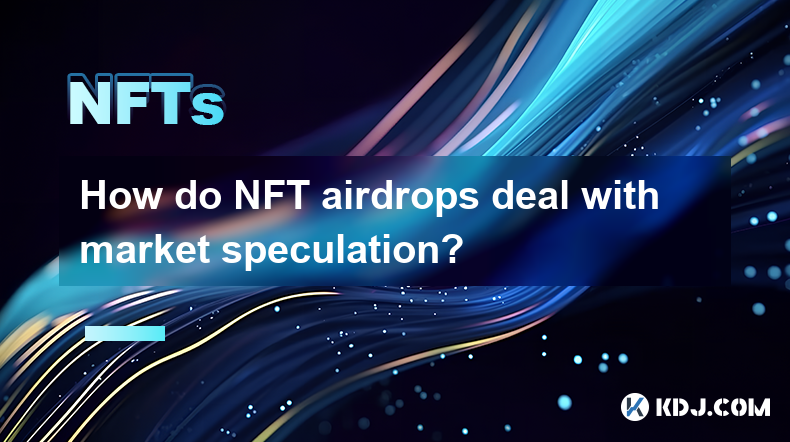
How do NFT airdrops deal with market speculation?
Apr 20,2025 at 10:28pm
NFT airdrops have become a significant phenomenon in the cryptocurrency space, often used as a marketing tool to distribute tokens or digital assets to a wide audience. However, they also introduce elements of market speculation that can impact the value and perception of NFTs. This article explores how NFT airdrops deal with market speculation, delving...
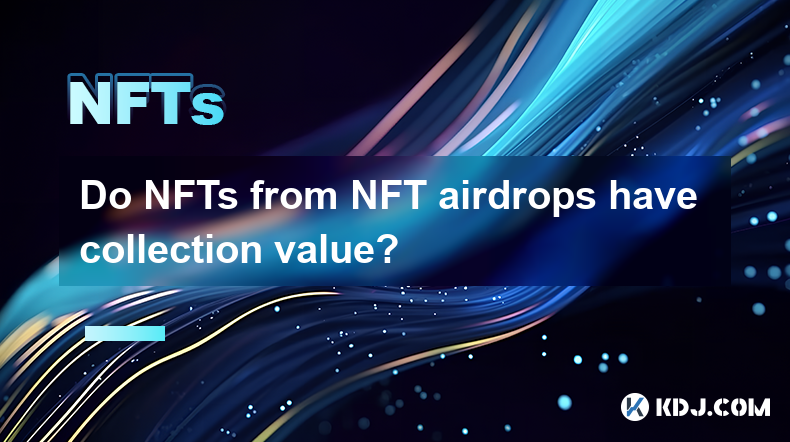
Do NFTs from NFT airdrops have collection value?
Apr 18,2025 at 11:49pm
NFTs, or non-fungible tokens, have become a significant part of the cryptocurrency ecosystem, and NFT airdrops are one way for projects to distribute these digital assets to their community. A common question that arises is whether NFTs received from airdrops have any collection value. To answer this question, we need to delve into various aspects of NF...
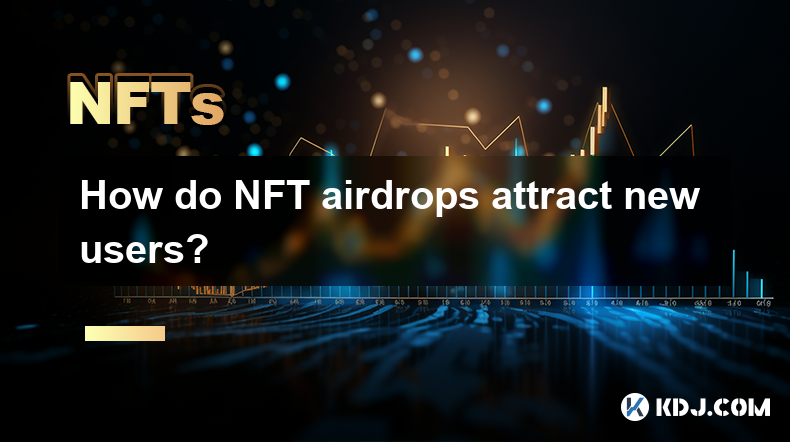
How do NFT airdrops attract new users?
Apr 21,2025 at 07:21am
NFT airdrops have become a popular strategy within the cryptocurrency community to attract new users and engage existing ones. By distributing free NFTs to a targeted audience, projects can create buzz, increase visibility, and foster a sense of community. This method leverages the allure of free digital assets to draw in participants who might not have...
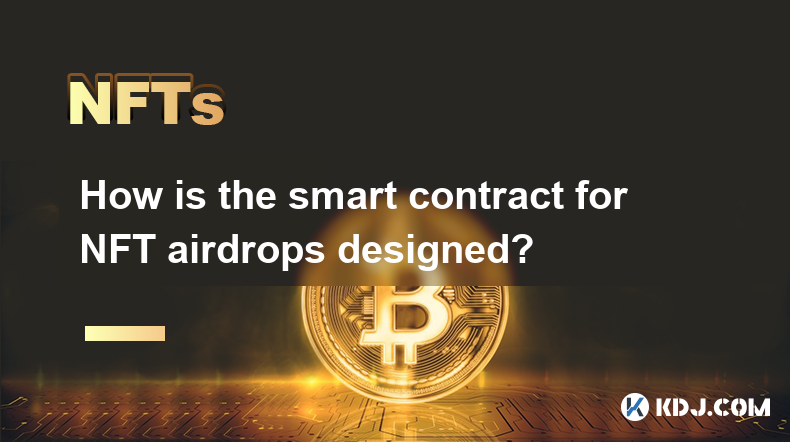
How is the smart contract for NFT airdrops designed?
Apr 18,2025 at 03:10am
The design of a smart contract for NFT airdrops is a complex process that requires careful consideration of various factors to ensure the airdrop is executed smoothly and securely. This article will delve into the intricacies of how such a smart contract is designed, focusing on key components, security measures, and the implementation process. Key Comp...

Will NFT airdrops affect the market value of NFT?
Apr 22,2025 at 06:56am
The impact of NFT airdrops on the market value of NFTs is a topic of significant interest within the cryptocurrency and digital asset community. NFT airdrops, where creators or platforms distribute free NFTs to a targeted group of recipients, can have various effects on the market value of NFTs. This article delves into the different ways NFT airdrops c...

How to display and trade NFTs from NFT airdrops?
Apr 18,2025 at 04:42am
How to Display and Trade NFTs from NFT Airdrops? NFT airdrops have become a popular way for projects to distribute their tokens and engage with their community. If you've received NFTs through an airdrop, you might be wondering how to display and trade them. This article will guide you through the process step-by-step, ensuring you can showcase your NFT...

How do NFT airdrops deal with market speculation?
Apr 20,2025 at 10:28pm
NFT airdrops have become a significant phenomenon in the cryptocurrency space, often used as a marketing tool to distribute tokens or digital assets to a wide audience. However, they also introduce elements of market speculation that can impact the value and perception of NFTs. This article explores how NFT airdrops deal with market speculation, delving...

Do NFTs from NFT airdrops have collection value?
Apr 18,2025 at 11:49pm
NFTs, or non-fungible tokens, have become a significant part of the cryptocurrency ecosystem, and NFT airdrops are one way for projects to distribute these digital assets to their community. A common question that arises is whether NFTs received from airdrops have any collection value. To answer this question, we need to delve into various aspects of NF...

How do NFT airdrops attract new users?
Apr 21,2025 at 07:21am
NFT airdrops have become a popular strategy within the cryptocurrency community to attract new users and engage existing ones. By distributing free NFTs to a targeted audience, projects can create buzz, increase visibility, and foster a sense of community. This method leverages the allure of free digital assets to draw in participants who might not have...

How is the smart contract for NFT airdrops designed?
Apr 18,2025 at 03:10am
The design of a smart contract for NFT airdrops is a complex process that requires careful consideration of various factors to ensure the airdrop is executed smoothly and securely. This article will delve into the intricacies of how such a smart contract is designed, focusing on key components, security measures, and the implementation process. Key Comp...

Will NFT airdrops affect the market value of NFT?
Apr 22,2025 at 06:56am
The impact of NFT airdrops on the market value of NFTs is a topic of significant interest within the cryptocurrency and digital asset community. NFT airdrops, where creators or platforms distribute free NFTs to a targeted group of recipients, can have various effects on the market value of NFTs. This article delves into the different ways NFT airdrops c...
See all articles























































































